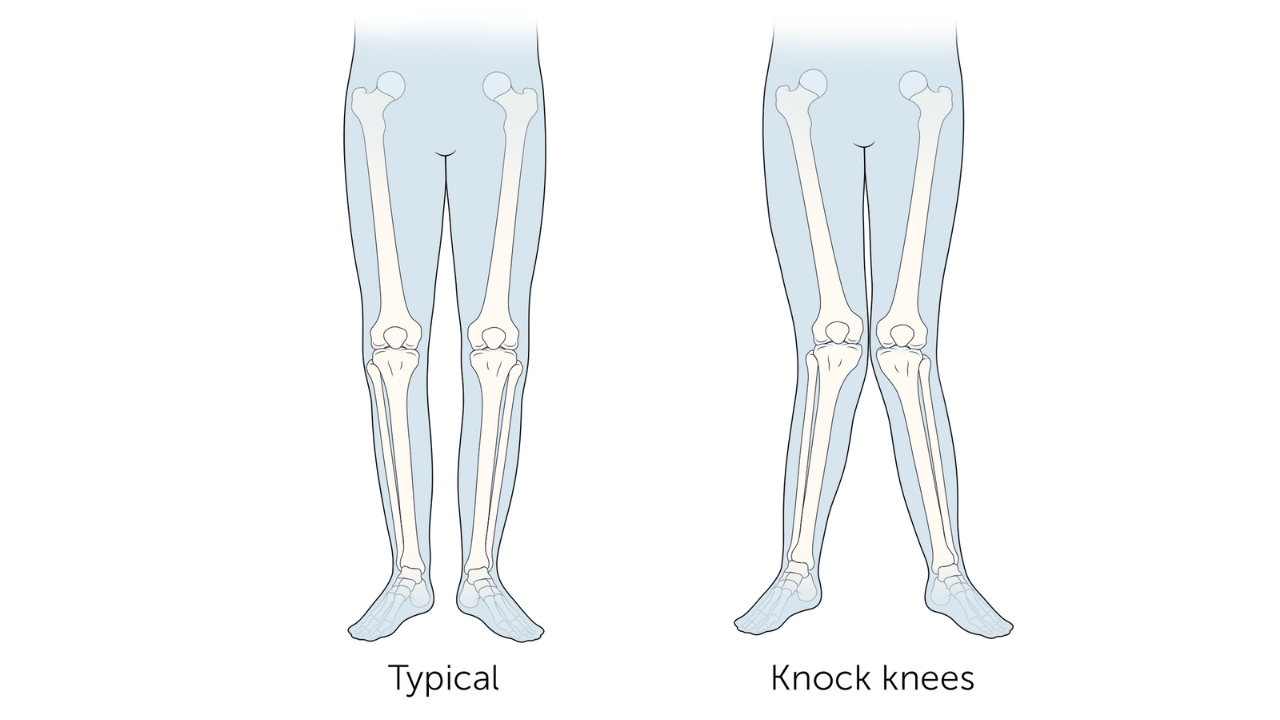Knock knees, also known as genu valgum, is a malformation that arises when the knees bend inwards and knock together when standing with the knees together. Though the disorder can affect people of any age, it is most frequent in young children who are still developing. While most knock knees heal on their own, some can be signs of an underlying problem such as rickets or other bone disorders. Obese adolescents and youngsters with flat feet or hypermobile joints are more likely to get it.
Causes
Knock knees are most frequent in young children throughout their early stages of growth and development. However, as the youngster develops, the legs normally straighten. If left untreated after the age of six, knock knees can reveal an underlying issue that can be harmful as it continues into adulthood. Vitamin D insufficiency is the leading cause of knock knees in children. Vitamin D aids calcium absorption and assimilation in the bones, which strengthens them. Knee/ligament injuries, fractures, and other factors can also cause knock knees. Knock knees can occur in people who have osteoarthritis or rheumatoid arthritis.
Symptoms
When knees are positioned together, visible signs include a bigger gap between feet and ankles than normal, generally 8 cm.
– The most common sign of knock knee in youngsters is an inability to run; if they try, they fall.
Other symptoms include ankle, foot, hip, and knee discomfort, as well as knee instability, limping, joint and hip stiffness and soreness, and progressive knee arthritis.
Some people may have additional knock knee symptoms, such as discomfort and increasing joint difficulties, which usually appear after the age of 25 or 30.
Prevention
If discovered early enough, it is very much a preventable condition.
“Because the major cause is a deficiency in Vitamin D, 90 percent of children under the age of eight are effectively treated by administering Vitamin D after determining the levels using simple X-rays. If not treated with Vitamin D, children between the ages of 8 and 10 have a daycare operation called selective epiphysiodesis, which straightens the kid’s leg in 4-5 months and allows the youngster to resume regular activities. For prompt diagnosis and treatment, parents of children with knock knees must be aware of the condition “According to the expert.

 English
English






